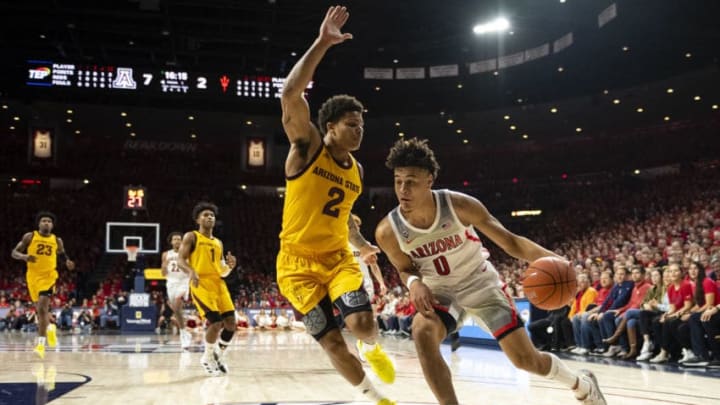
Aaron Nesmith, Vanderbilt
Aaron Nesmith was not going to get the benefit of the NCAA Tournament. His Vanderbilt Commodores had a difficult season under first-year coach Jerry Stackhouse and would fall woefully short.
Nesmith’s complete profile was there for scouts to ponder over. But even that was incomplete.
A big reason the team fell short of expectations was the loss of their leading scorer in Nesmith to a stress fracture in his right foot in January. That might be why he could tumble to where the Magic are picking. And without a standard pre-draft process for teams to personally evaluate his health and status, there could be at least a few teams who might stay away.
The team that takes the risk is going to get a supremely good scorer.
It is exceedingly tough to average 20 points per game in the 40-minute, slower-paced college game. Only 28 players in all of Division I college basketball can claim that mantle. To do so requires a pretty high usage rate and a lot of shots.
That is what makes Nesmith really intriguing and interesting. He averaged 23.0 points per game on 14.6 field goal attempts per game and a 62.2-percent effective field goal percentage. His usage rate was still at 26.3 percent, according to Sports-Reference, but the way Nesmith could get his shots is a way that can translate to the NBA.
Vanderbilt used a lot of its offense to get Nesmith coming around screens and even popping on pick and rolls. They wanted to try to suck the defense off him and give him the space to shoot. He is a solid spot-up shooter. And if he can continue to work on his cutting, he could help twist defenses some with his gravity.
In his 14 games last year, Nesmith shot 52.2 percent on 8.2 3-point field goal attempts per game and 82.2 percent from the line. Nesmith might be one of the most elite shooters in this draft.
The question is whether he will provide much else.
He is not a natural driver. He can make straight line-drives to the basket, but even finishing over smaller defenders is tough for him off the dribble. Nesmith is not finishing over anyone. He has good athleticism to finish around smaller defenders, but he is not the supreme athlete to dunk over anyone.
He prefers to stop and hit a turnaround jumper over defenders, rather than get all the way to the basket.
Defensively, he has a lot of the tools teams want. At 6-foot-6 with a 6-foot-10 wingspan, he checks off that box for the Magic. He is a smart defender. But he does not possess great athleticism or understanding to use his athleticism to slow down opposing players.
He is young enough that he still should be able to learn technique and improve on that end. The physical tools are all there.
But ultimately, no one should rely on Nesmith to be their top player. At least not with how he looked in college. He put up prodigious scoring numbers but Vanderbilt still struggled with him out there — the Commodores did not beat a single power conference team before Nesmith’s injury.
Nesmith is someone who could fit into a role with a team as a floor-spacer and shooter though. If he has rehabbed and regained strength in his leg, then he should be set for a solid rookie season no matter where he is drafted. Just as long as they find the right role for him.
